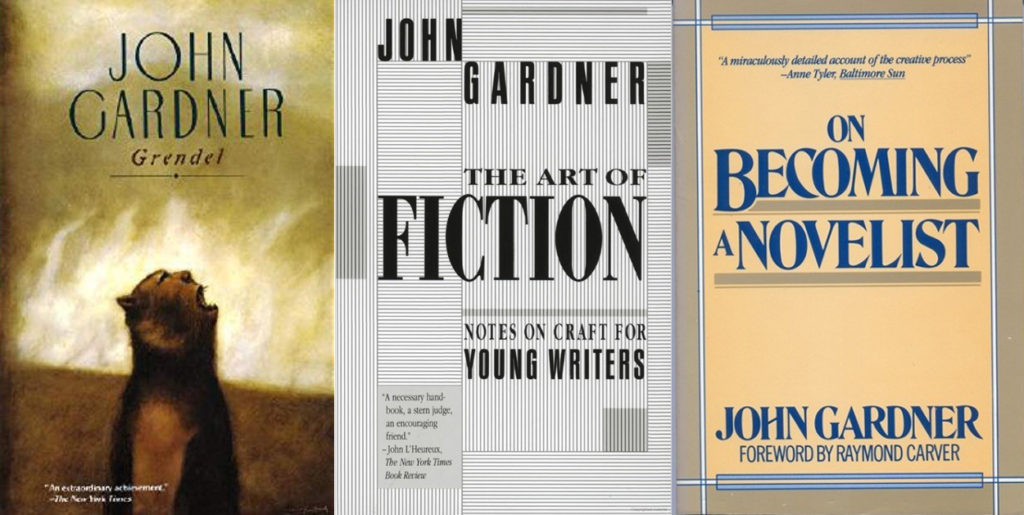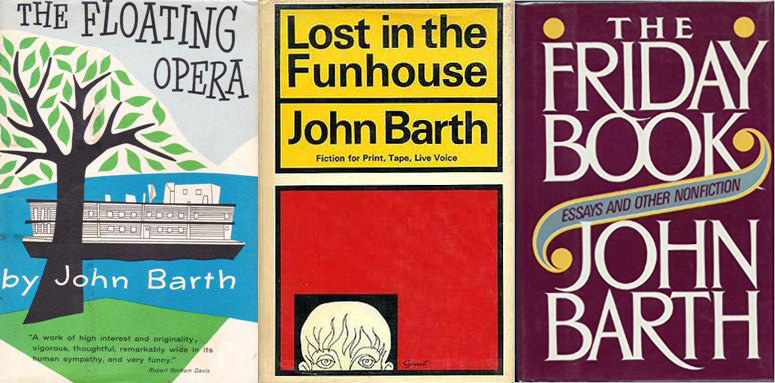In this article, I want to talk about my journey as a writer specifically. There’ll be future articles in which I talk about the book I’m writing, but for now I want to talk about the authors who set me on my current path.
Growing up and reading books
I was lucky enough to have parents who did their best to give my brother and me a stimulating environment, including trips to the library every week. One thing they didn’t usually do was push me towards particular kinds of books, and that was probably a good thing. My dad read mostly business books, and my mom read mostly romances and thrillers. I don’t think they would have predicted that my favorite books would end up being works of fabulist literary fiction by international authors. But that is where I was headed, and the way I got there was a little unusual.
John Gardner: My introduction to contemporary literature

In fact, it was a chance event that started me down that path. At the end of a my senior year of high school, I was walking through my local public library when I stumbled across The Art of Fiction: Notes on Craft for Young Writers, by John Gardner. I wasn’t looking for books on writing instruction, but this one jumped out at me on account of the fact that I’d read John Gardner’s Grendel a few months ago in my high school English class. I’d always that I might become a writer, so I picked it up.
(Speaking of which, I really have to thank my high school English teacher, Mrs. Froehle, for the fact that she introduced us to Grendel; such an unusual choice of book, and it made a difference to my life!)
As I read the book, it was like stepping into a new world. There were references to familiar authors like Tolstoy and Dostoevsky, but also all-new authors I’d never heard of, such as Donald Barthelme, William Gass, and Joyce Carol Oates—the literary authors of the 1970s, John Gardner’s generation.
The book was also my first exposure to Franz Kafka, with the result that soon I was reading “The Metamorphosis,” “The Hunger Artist,” and eventually The Trial and The Castle. In reading these works, I was taken up gothic streets to imposing hilltop fortresses that promised answers, but cruelly withheld them until you’d waited an infinite number of lifetimes. I haven’t been the same since.
The book also introduced me to Jorge Luis Borges and Italo Calvino, regarding both of whom whom I’ll have more to say in a bit.
After reading The Art of Fiction, I also read his other book for young writers, On Becoming a Novelist, and finally found my way to his most infamous book, On Moral Fiction, a vituperative excoriation of a great many writers of his generation. The book left some readers angry, back in the day, but it mainly left me curious, wanting to know more about the authors he’d so sharply criticized.
John Barth: My introduction to metafiction

There was no writer more criticized in that book than John Barth, and possibly as a consequence of that, I spent several months reading a lot of his writing, from The Floating Opera to The End of the Road to The Sot-Weed Factor to LETTERS. But if anything, it may have been his short story “Lost in the Funhouse” that spoke to me most, showing me what a metafictional short story can be—how it starts out about life, until, through narrative twists, it transforms, as in a funhouse mirror, until it is about itself.
I also read Barth’s nonfiction, of which his most famous essay was surely 1967’s “The Literature of Exhaustion,” a work that celebrated of the possibilities of metafiction in general, as well as the stories of Jorge Luis Borges in particular.
I also read another essay that Barth had written twelve years later as a follow-up, entitled “The Literature of Replenishment,” a work which sought to clarify the earlier essay, to discuss postmodernist fiction, and to praise two outstanding examples thereof in the work of Italo Calvino and Gabriel García Márquez.
Kafka, Borges, Calvino, and García Márquez: The world’s most vivid dreams

And so Gardner and Barth together introduced me to Kafka, Borges, Calvino, and García Márquez.
Regarding Kafka, I described above the lasting impression he made on me. Read “The Metamorphosis.”
Regarding Borges, he imbibed deeply Kafka’s tales of the infinite, and wrote tales that if anything were even more infinite, sometimes blurring the line between the completely incomprehensible and the completely mundane in a way that leaves the reader more than a little disturbed. Read “Tlön, Uqbar, Orbis Tertius.”
Regarding Calvino, I was taken by his capacity to write with whimsicality and grace—with “lightness,” as he would say—on the most unlikely of topics, from the big bang to the extinction of the dinosaurs. Read his collection Cosmicomics.
And regarding García Márquez, I was blown away by his tour de force of magical realism, crafting perhaps an even more captivating mixture of the mundane and the transcendent than Borges or Calvino. Read One Hundred Years of Solitude. No one who picks it up regrets it.
1994-1995: The year I was baptized into literature
These, then, were the books I read during the year 1994-1995, and how I discovered them. When I began that year, I was relatively ignorant of literary fiction, and so uncertain what I wanted to do with my life that, rather than enroll in college without knowing why, I took a year off.
By the end of that year, I had read a significant chunk of twentieth century literature, including some of its very best authors, the ones who, to this day, continue to blow me away with their transcendent visions. And by the end of that year, I had begun my studies as a creative writing major.
And, as future blog posts will reveal, the above authors continue to inspire me in my fiction, which I have recently begun to write again.